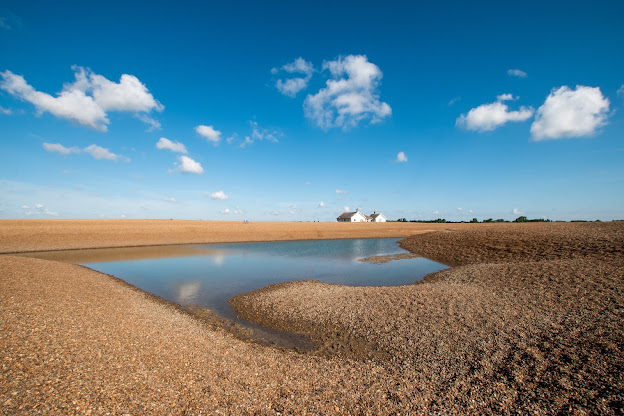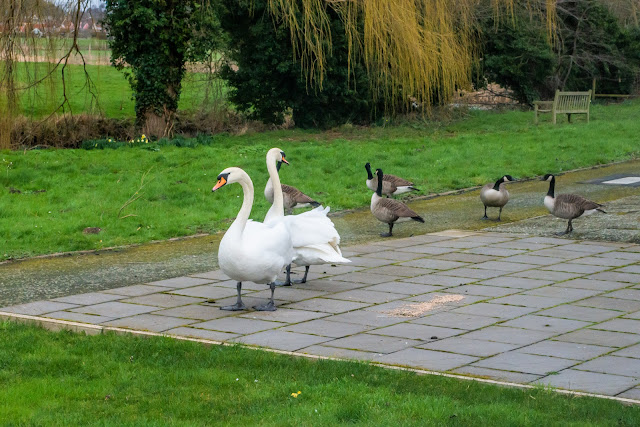Shingle Street with Gill Moon

As its name suggests, Shingle Street consists of a large swathe of shingle - no sand here! Where the tide has ebbed and flowed over the years, there are mounds of shingle and inlets and pools that fill and empty with the tide. It is a photographer's paradise. It is here that local Professional Photographer, Gill Moon , held a morning coaching session, and to which we attended. I came away with several images (hopefully better than they would have been!) and I will share some in this blog. The morning started cloudless, but soon clouds started to bubble up, which was much to my delight as I love big skies and bubbling clouds. So first, some images at the area near the cottages with piles of shingle and some inlets. I was using, as an experiment, a 10-20mm Sigma lens, and this gave me huge skies. Curves and mounds More Curves and clouds .... ... which are starting to build Low down view of the Coastguard cottages Clouds gathering over the Coastguard Cot...



